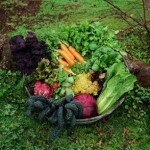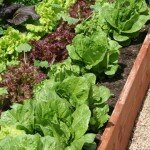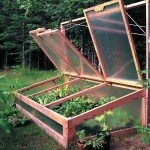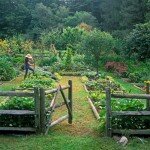Karen Weiland, Purdue Master Gardener
 Cooler weather, avoiding most weeds and insects that have come and gone are some of the advantages of planting a fall vegetable garden. Some veggies prefer and grow best in the cooler weather of fall such as kale, cabbage, beets, carrots and lettuce. Late summer is the time to get these “cool season” plants growing.
Cooler weather, avoiding most weeds and insects that have come and gone are some of the advantages of planting a fall vegetable garden. Some veggies prefer and grow best in the cooler weather of fall such as kale, cabbage, beets, carrots and lettuce. Late summer is the time to get these “cool season” plants growing.
When choosing what to plant you need to consider how much time you have until the first expected hard frost and the days to maturity of each crop. There are some vegetables such as lettuce, carrots and beets that can be harvested young. Some vegetables can withstand light frosts. Keep in mind when choosing seeds that some cultivars differ in their days to  maturity, therefore, look for those that offer the least days. Some vegetables that can withstand light frosts are broccoli, carrots, spinach, turnips and cauliflower. Those that can shiver through a hard frost are beets, green onions, peas, radishes and brussel sprouts.
maturity, therefore, look for those that offer the least days. Some vegetables that can withstand light frosts are broccoli, carrots, spinach, turnips and cauliflower. Those that can shiver through a hard frost are beets, green onions, peas, radishes and brussel sprouts.
Plant garlic after the first frost, but two to four weeks before the first heavy frost and shallots after the first frost for harvest the following summer. This planting schedule helps to avoid excessive top growth that will only be killed off by the cold.
When planting your fall vegetable garden keep in mind that you need to rotate the crops. Don’t plant a veggie in the same part of the garden where it has been in the last couple of years. This will help to ensure best growth and avoidance of pests and diseases.
 A way to extend the growing season is to use a cold frame. This can be as easy as making a frame around plants with straw bales and topping it off with an old window. Keep in mind that if your cold frame is not automatically vented the “lid” will need to be moved on hot days so that the plants will not become overheated. Also, the plants in a cold frame will not be exposed to rain, so check it often for watering needs.
A way to extend the growing season is to use a cold frame. This can be as easy as making a frame around plants with straw bales and topping it off with an old window. Keep in mind that if your cold frame is not automatically vented the “lid” will need to be moved on hot days so that the plants will not become overheated. Also, the plants in a cold frame will not be exposed to rain, so check it often for watering needs.
On a side note, it is time to start thinking about building the nutrient levels in your garden soil over the winter. Sowing cover crops like Winter rye or Dutch white clover this fall will increase the organic matter in your soil after they are tilled under next spring.
Trees, shrubs and perennials are on sale this time of year and late summer into early fall is a  prime time to plant. Get them into the ground soon so the roots have time to expand. Top them off with two inches of mulch. This will help with the heaving that can occur with the freeze and thaw cycle of the winter season.
prime time to plant. Get them into the ground soon so the roots have time to expand. Top them off with two inches of mulch. This will help with the heaving that can occur with the freeze and thaw cycle of the winter season.
As always, Happy Gardening!
More information about gardening and related subjects is available online at www.hort.purdue.edu/ext/garden_pubs The Purdue University Cooperative Extension Service can be reached at 499-6334 in LaGrange Co., 636-2111 in Noble Co., 925-2562 in DeKalb Co. and 668-1000 in Steuben Co.
Karen Weiland, Master Gardener, Purdue Extension, LaGrange Count



